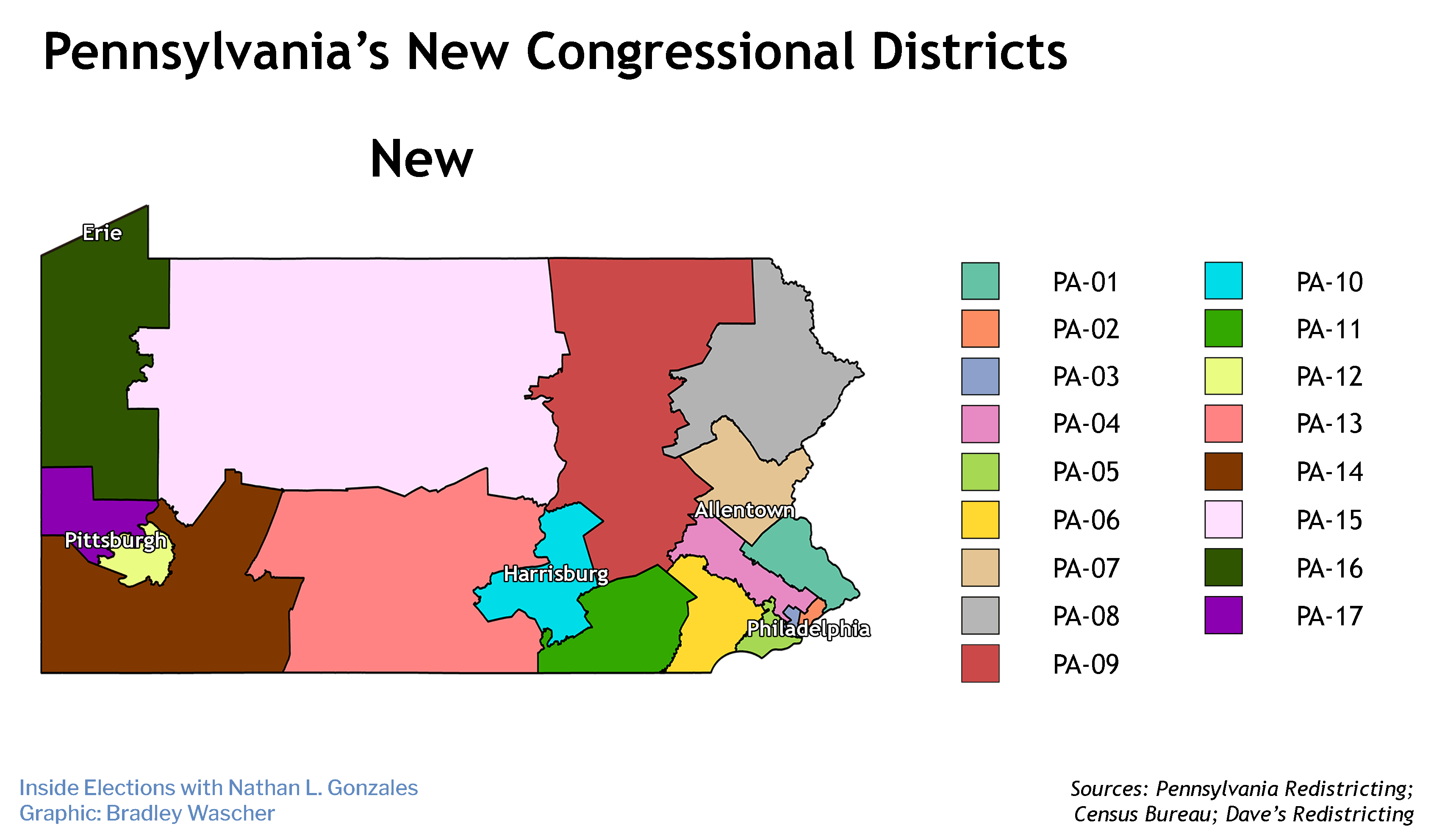With a Democratic governor and GOP-controlled legislature, Pennsylvania’s redistricting process was bound for the courts from the beginning. Democrats even filed lawsuits preemptively in the commonwealth to prepare for that possibility.
After Gov. Tom Wolf vetoed the legislature’s map, the courts stepped in. First, a conservative lower court judge acting as a special master recommended adoption of the legislature’s map. Then, the Democratic-controlled state supreme court overruled the lower court and ordered adoption of a plan proposed by Democratic plaintiffs. Finally, the U.S. Supreme Court declined to overturn the state Supreme Court’s ruling on appeal from Pennsylvania Republicans.
Pennsylvania’s 18-member delegation is currently evenly split, with nine Democrats and nine Republicans. Joe Biden and President Donald Trump both carried nine districts under the old map.
But the state lost a district due to reapportionment and will only have 17 seats this decade. Biden would have carried nine of them, to Trump’s eight.
Technically, that means the eliminated district was a Republican one. And indeed, the map already forced one GOP incumbent, Fred Keller, into an early retirement. But it doesn’t mean Democrats can expect a 9-8 advantage automatically.
If Republicans benefit from a good enough national environment, they could conceivably win as many as 11 seats on the new map.

1st District
GOP Rep. Brian Fitzpatrick’s district is largely unchanged. It still encompasses all of Bucks County and a sliver of Montgomery County, and it would have voted for Biden by 5 points, 52-47 percent. Fitzpatrick has a moderate reputation and regularly outperforms the top of the ticket, winning a close race in 2018 even as his Democratic opponent outspent him 4-to-1 and the statewide Democratic candidates won the district by double digits. ...

